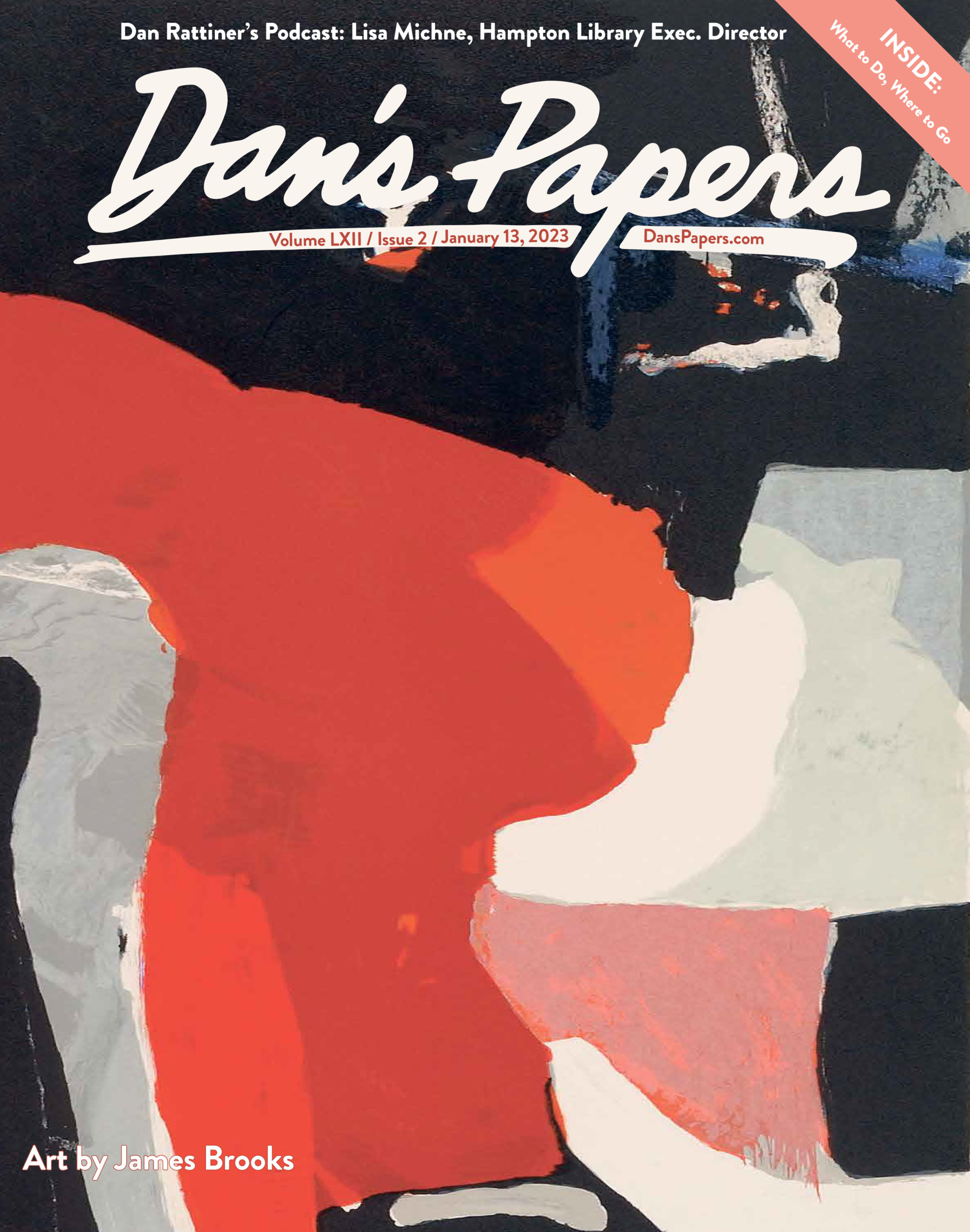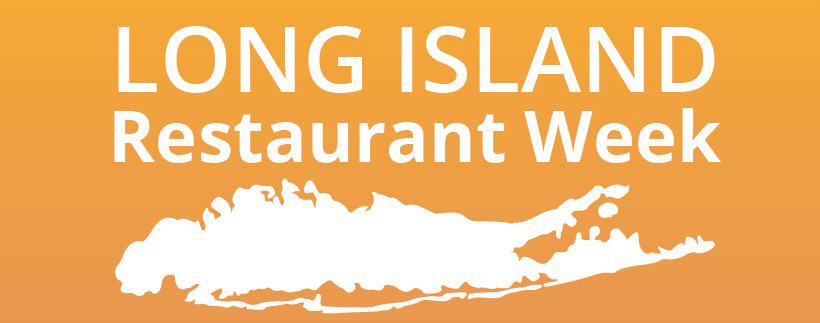Dr. Klaus Ottmann Discusses Cover Art & Legacy of James Brooks
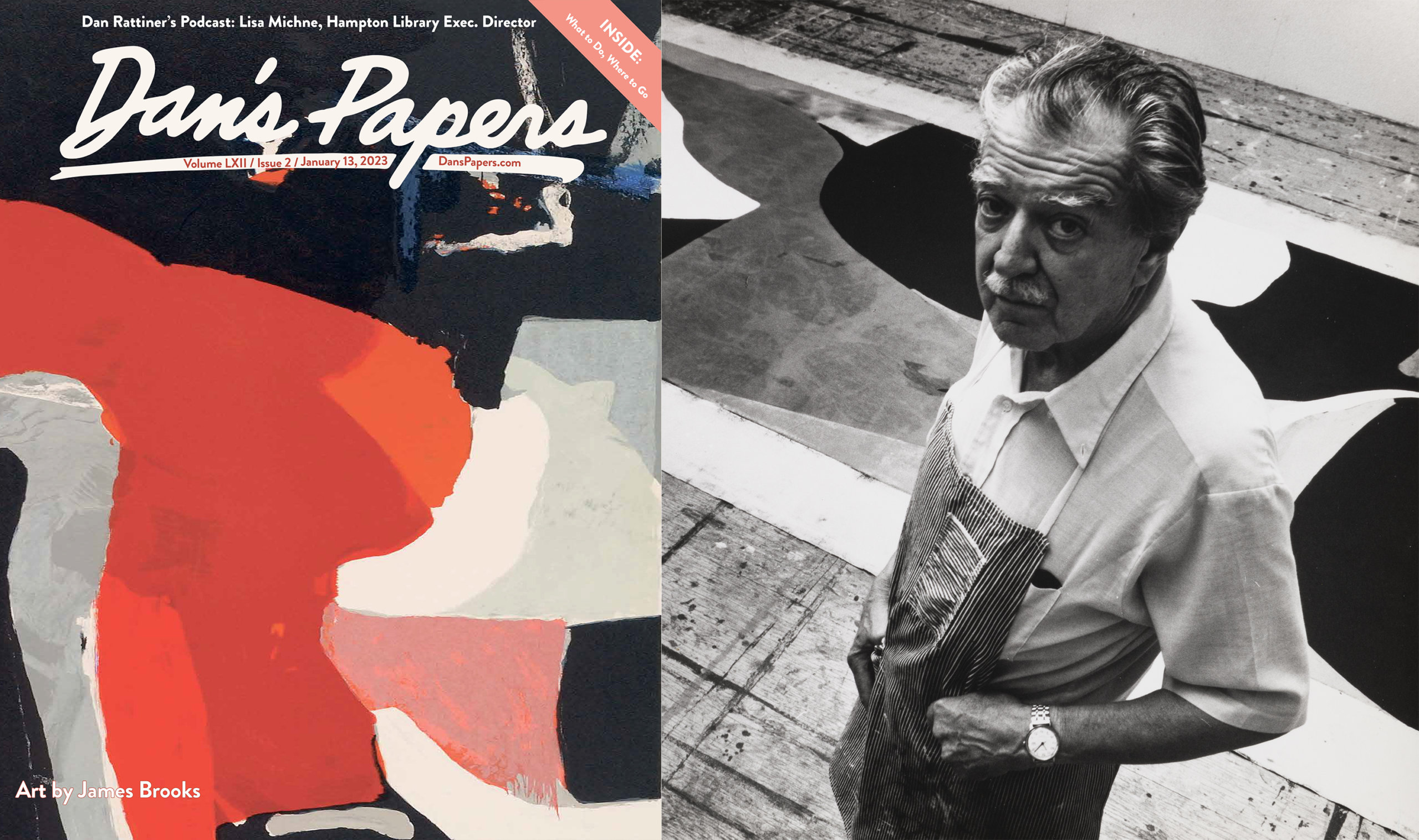
Following our unorthodox cover last week, the January 13, 2023 cover of Dan’s Papers features a piece by late East End painter James Brooks (1906–1992).
The Missouri-born, Texas-raised and New York-settled painter is best remembered for his 1940 mural in the Marine Air Terminal at LaGuardia Airport, for his status as one of the Irascible 18 abstract expressionists who protested a 1950 modern art show at the Metropolitan Museum of Art and for his home/studio in Springs, once shared with his artist wife Charlotte Park, that’s now considered one of America’s 11 most endangered historic places.
The art on this week’s cover, a 1982 painting titled “Eastern,” was provided to us by the Parrish Art Museum in Water Mill, long ahead of the painting’s inclusion in the upcoming exhibition James Brooks: A Painting Is a Real Thing, scheduled to debut at the museum on August 6.
Guest curated by Dr. Klaus Ottmann, the exhibition will be a “comprehensive survey of significant scope comprised of some 50 paintings drawn from public and private U.S. collections,” according to the museum’s website.
The show offers an overdue retrospective of the artist’s fascinating four-decade career and diverse range of art styles, as well as an insightful 125-page catalogue featuring a chronology, bibliography and interpretive essays by Ottmann and other experts.
We spoke to Ottmann about the cover art, Brooks’ career and the August exhibition at the Parrish Art Museum.
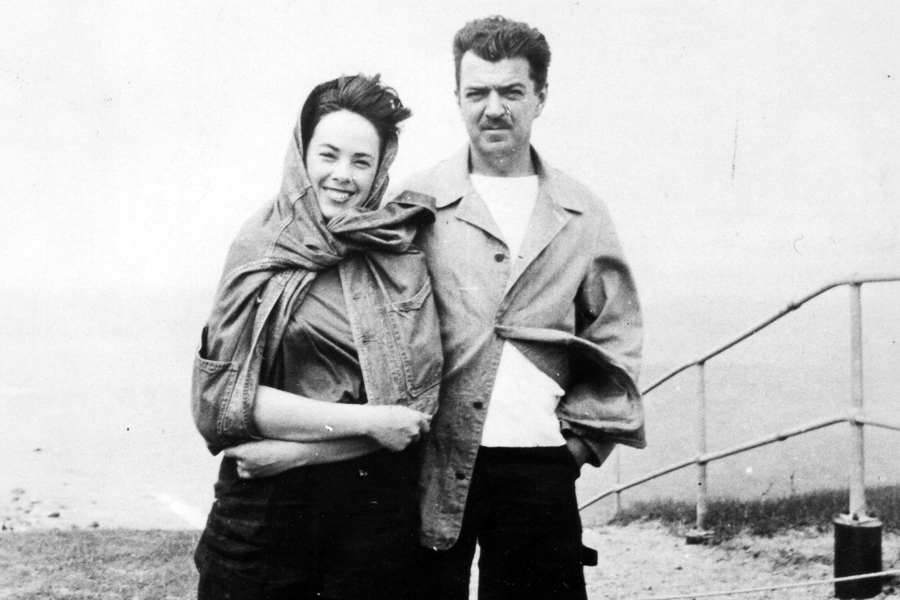
A Conversation About James Brooks
How is James Brooks’ “Eastern” representative of the artistic voice found in his work?
I would say it’s representative of his later style. He had several periods that he went through, and in that sense, this is basically his last style. There are a lot of works in the exhibition in that similar style.
While Brooks avoided sticking to one dominant style, how are his works categorized in terms of period and style?
As I was working on the exhibition — which is going to be chronological and inclusive of his entire artistic development — and writing the essay, I was trying to come up with headings (for the different sections) but I couldn’t really find any good ones. I ended up, in the essay, just using Roman numerals I, II, II, IV and so forth. But there are particular eras.
It’s a little complicated because he evolves from a realist artist who was trained in this very Southwestern style when he was in Dallas, but then there were all these interruptions. He came to New York, started to develop his style and get into abstraction, but then he was sent to Europe for the war.
He became a combat artist, and, of course, he couldn’t really follow up on the interest he had developed for abstraction and went back to a more realistic style.
It was not until later, when he came back after the war. Of course a lot had happened during his absence, with Jackson Pollock becoming this really famous artist and abstract expressionism was basically created. He had to deal with that, he’d absorb some of that, and he was able to come back into it. So it was a continuous development with some interruptions.
In my view, he really came into his own in the 1940s. Around 1946 he had this breakthrough where he discovered the particular canvas he was using let a lot of paint through to the back, and he noticed that there were images developing on the backside, on the reverse of his canvas, that were sometimes more interesting than what was on the front.
He developed this staining technique that other artists later adopted as well, and I think that was his real stylistic breakthrough, but he didn’t stick with that. It was just a period that helped him to loosen himself more, and he continued to do some of these stained paintings for a period of time, but then he moved away from that.
But that really helped him to develop his very own style, and it gave him the freedom to fully dive into abstractions and go toward the kind of style that is represented in this cover image.
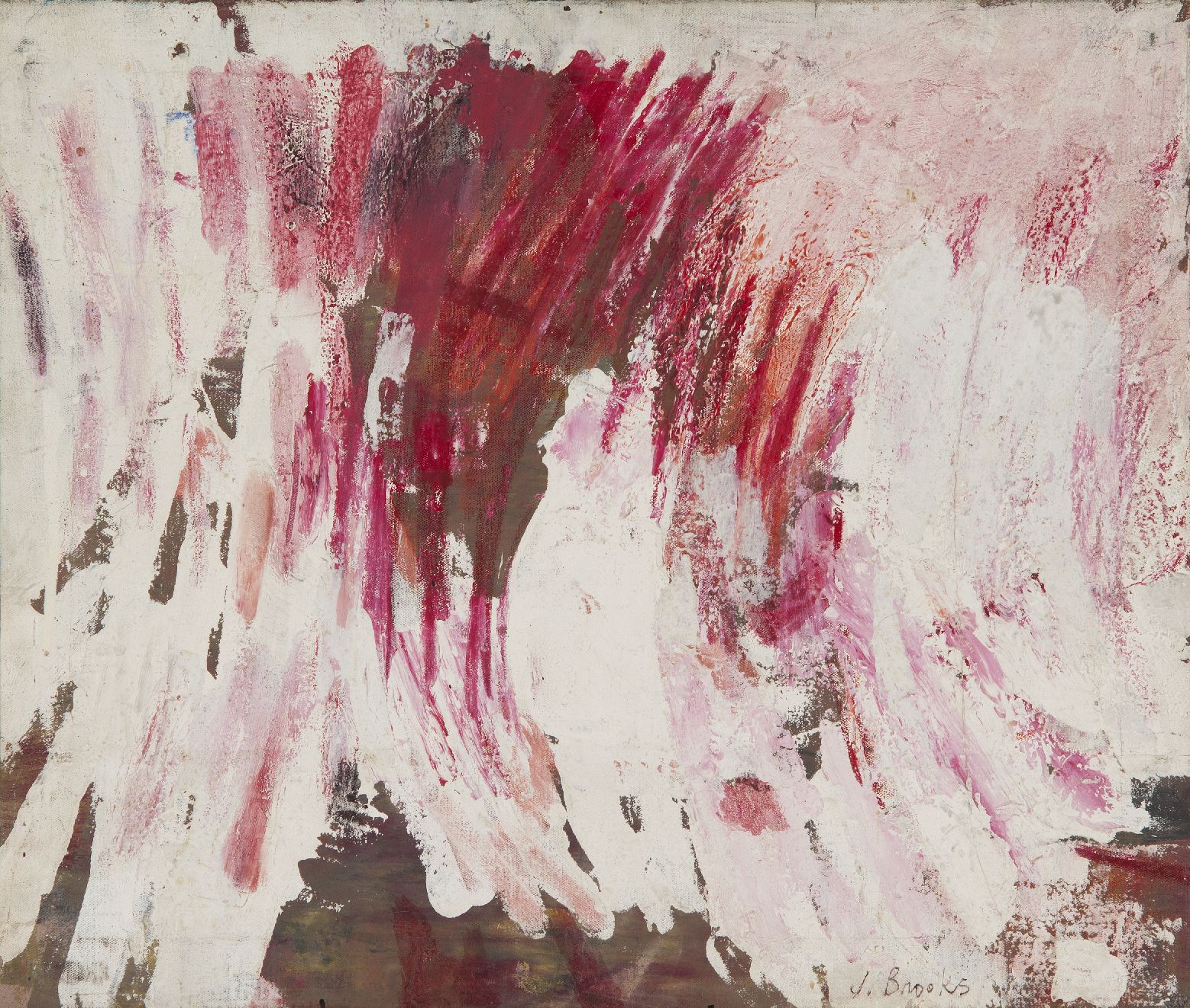
Are the colors, brushstrokes and title of “Eastern” intended to convey a deeper meaning?
I doubt that. Most of the titles were completely made up — not all of them but most of them. He always tried to not put too much clear meaning into his paintings. He did tend to, in his later works, lean toward brighter colors, but I wouldn’t interpret much into it.
There are very few paintings that are clearly identified by title. There’s one he made about JFK, one he made about (Igor) Stravinsky that’s in the show … but for most of the works, he really tried to not make it too easy for people to come up with some interpretation, which I think is great.
How is the evolution of Brooks’ abstract expressionism unique to that of his contemporaries?
He was not as much of an interrupter, like some others and Pollock, but he was more of a synthesizer who would bring a lot of elements together. … His character was very different. He was quite successful, but he wasn’t a big star like Pollock and Rothko … and I think it’s really great that this exhibition will show more of his work and what he’d been doing.
It was like an abstract regionalist style that could only be developed there. He wasn’t there for most of it, but he got a little bit of it, and he kept going back to Dallas. … There was this strong connection to the regionalist style that was very specific to Dallas that had an influence on him and made his work look very unique.
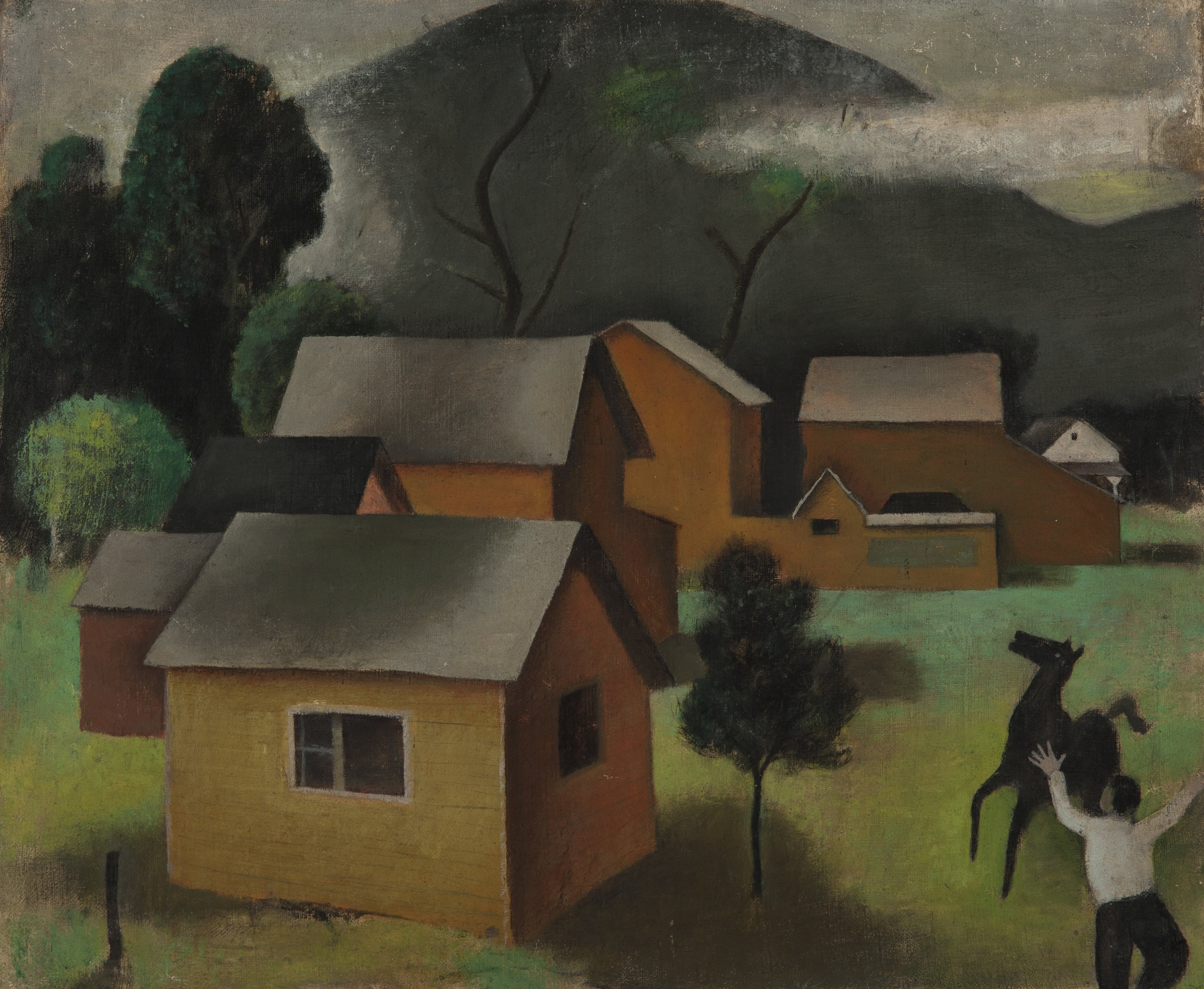
Oil on canvas, 20″ x 24″) at the Parrish Art Museum, Water Mill, NYCourtesy Parrish Art Museum
What is your goal or approach to curating James Brooks: A Painting Is a Real Thing?
I should preface this by saying that I was brought in after the chief curator (Alicia Longwell) expressed her desire to retire, and they needed someone else to work on this.
There are several reasons and goals for this exhibition. One is that the Parrish, which has had good relationships with all these artists in the Hamptons and also Brooks, received a major gift of all these works in the estate. I think the Parrish was required to do an exhibition. I had done an exhibition about 10 years earlier at the Parrish on Alfonso Ossorio, Jean Dubuffet and Jackson Pollock. …
I was very interested to learn about James Brooks — who was Jackson Pollock’s best friend and was very close to all the artists, one of the original so-called “Irascibles” — and he’s not as well-known as he should be. My main goal is to make this artist better-known.
Also, there are so many interesting stories about this artist, which are very unique. … He was one of the few true combat artists in World War II. That’s a story that’s not that well known. The United States government actually did send visual artists — most of them were illustrators but some were really fine artists.
Not many were very well known, but he was one of the better-known ones. They felt that in addition to having people there who would take photographs, (they should) have artists there as well with their sensibility to capture what was going on in the war in drawings, paintings and so forth. …
James Brooks created one of the most well-known and highly regarded murals during the WPA (Works Progress Administration) years, which is still there and visible at LaGuardia Airport. It was probably the most ambitious — in terms of size, content and scale — mural ever made in the United States, and that’s a remarkable story.
There are so many different sides to this artist, and I think there hasn’t really been an exhibition or a publication that has brought all of these various aspects of his life and of his work in one place. To really show his remarkable achievements in a new light is one of my goals. …
Would I have liked to meet Jackson Pollock in person? Yes, because he was a star and an interesting character. But the guy I would’ve really liked to spend an evening with is James Brooks because of all the things he could have told me; all the stories of his life are so amazing.
I think he has such a rich life that’s really worth telling. … Brooks was, by all accounts, extremely well-liked, a very charming man, not a rebel or troublemaker like Pollock. … He’s an artist who definitely deserves more attention.
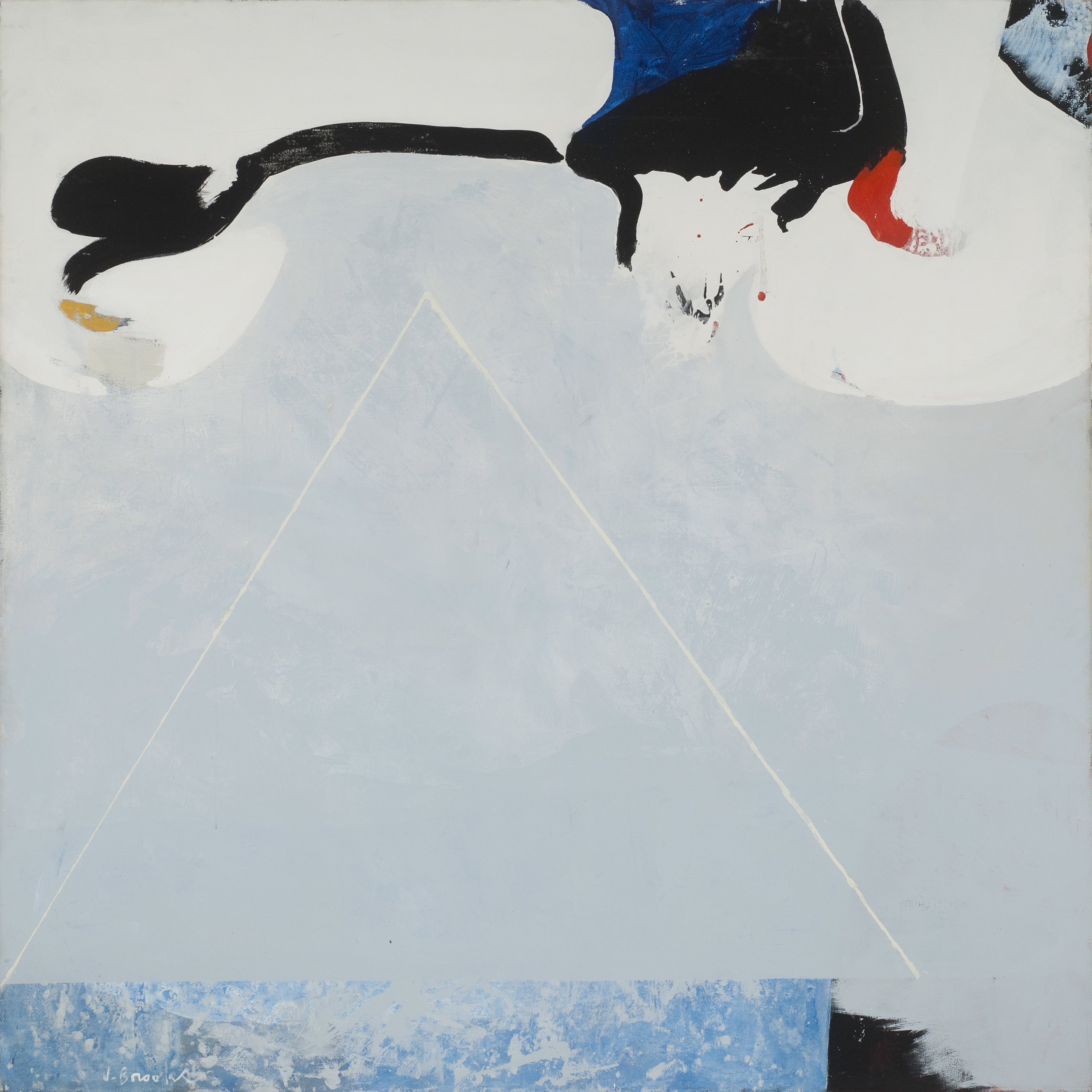
Would you like to share any closing thoughts or additional information?
I’m very happy to be able to work at the Parrish again. I worked there for two years; I did four exhibitions there. Then I went to The Phillips Collection for about 12 years, and I retired there just a few months ago. It’s really nice to be back at the Parrish and to do another exhibition there, so I’m particularly pleased to do that.
Visit parrishart.org to learn more about James Brooks: A Painting Is a Real Thing.
